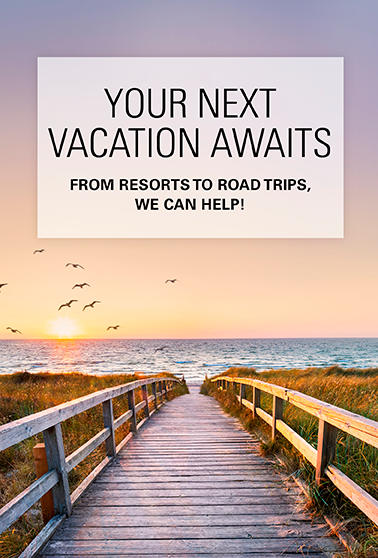Point Your Compasses North and Go
Craving the sights and sounds of Europe, but closer to home? Consider a trip to one of the most cosmopolitan cities in North America: Montréal. It is a great time to hop on a plane and explore this great Canadian city, as well as other charming locales in eastern Canada.
A devoted Canadaphile, I first visited Montréal in 1970, three years after the Montréal Expo had, as world fairs often do, put the bilingual city on the global visitation map. At 8 years old I was already a rabid fan of the Montréal Canadiens, the most storied team in professional hockey. This was also my first big city trip, a chance to ride a subway, known as the Metro, visit Expo amusement rides and explore a city where most people spoke a different language.
From playing youth hockey tournaments to covering the Montréal International Jazz Festival, I’ve since visited the city dozens of times over the years. With each trip, I have found this urban center as exceptional as I did in 1970, at once familiar and otherworldly.

City of Sights and Sounds
Montrealers often dine as late as 10 p.m., choosing to visit the bistro after they attend cultural events in the Quartier des Spectacles rather than before the curtain rises as we tend to do in the Pacific Northwest. Eating late is just one adjustment you may want to try when visiting North America’s most cosmopolitan city. The food is exceptional in Montréal. Try a croissant in one of the boulangeries along the cobblestone streets of Old Montréal lined on both sides with centuries-old French and English architecture. Or choose a café terrasse for a two-hour lunch in the Plateau, Montréal’s bohemian district.
A ubiquitous arts scene also makes the city worthy of a visit during any season. In the summer, the Montreal International Jazz Festival in early July overlaps with the Just for Laughs comedy festival. Both are among the biggest festivals of their genre in the world. In winter residents celebrate February’s Montréal en Lumière, a series of outdoor theater and dance performances often set in subzero temperatures and endless snowfall.
My favorite fête is July’s Complètement Cirque, when circus-style acts from around the world take over neighborhoods and Place des Arts for ten days. Besides the city’s reputation as a cultural epicenter, what makes Montréal festivals so amazing (as well as budget and family-friendly) is the city generally requires every performance on public grounds be free of charge.
Montréal is also a fantastic cycling city, is home to several exceptional museums and populated with one colorful neighborhood after another, but the city’s dedication to public arts sets it apart from any North American peer that I have visited.

Quebec’s Outdoors
Not that a trip to Québec should concentrate exclusively on its largest city. La belle province features abundant outdoor activities that include hiking and biking trails that traverse the Laurentian and Charlevoix Mountains, about one hour from Montréal and Québec City respectively.
And there’s so much to do. At roughly 3,300 miles, Québec’s La Route Verte is the longest configuration of cycling trails in North America, with wonderful designated paths like the Véloroute des Bleuets. Located north of Québec City, you can pedal for more than 150 miles around Lac-Saint-Jean among seemingly endless blueberry fields, then toss in a kayaking excursion below the stunning Saguenay Fjord. When in Montréal or historic Québec City, point your compass in any direction and you’ll discover various lodging options and outfitters to perk up your holiday with a little outdoor adventure.
I’ve ridden and rowed all over Québec, including a fabled five-day paddle on Lac Kipiwa in the Abitibi-Témiscamingue region, but my favorite pedaling and paddling memories remain in Maritime Québec, where I cycled among the lavender fields in the Magdalen Archipelago and kayaked around and through Percé Rock, a 1,420-by-300-foot limestone rock formation and arch in the Gulf of Saint Lawrence.
For me, settling inside a seaside bistro for moules frites and a local blanche bier after a 40-mile ride on Grosse Île rivals my time mountain biking among Galapagos tortoises and hiking beside Kimodo dragons. As for the famous Percé Rock, I maintained a vague memory of this mythical place for 50 years from a visit there as a child. But it wasn’t until I approached it by kayak in 2016 that I realized I’d rediscovered my geologic grail.

Exploring the Maritimes
As vast as Québec may be with cultural and adventure potential, the province also provides a perfect gateway to the “Maritimes,” specifically Nova Scotia, New Brunswick and Prince Edward Island. Like late dining along Rue St. Catherine, the eastern provinces offer much to see and do, beginning with their capitals, Halifax, Fredericton and Charlottetown.
Like Montréal, Halifax is a great town to sit on a terrace, especially when more than 16 hours of sunlight bath the city in summer. An evening stroll along Argyle Street reveals several superb sipping stations. Halifax is, at its heart, a university town, with several campuses that nurture academic arts as well as arguably Canada’s best indie music scene.
Like the Halifax Harbour, Instagram-worthy images abound in Fredericton, nearby Saint John and Charlottetown. All three cities reflect maritime traditions. Think cold lobsters and outstanding oysters, Acadian and other folk music and plenty of small city happenings, such as the Outdoor Outdoor Film Festival (Saint John) and Summer in the City Music Series (Charlottetown).
Quaint though they may be, voyaging outside the Maritimes cities should be required of any visitor. A road trip is filled with fishing villages, rolling hills and, in PEI, the homeplace of “Anne of Green Gables.” Lucy Maud Montgomery’s beloved tales of the schoolmistress continue to captivate young readers around the world. PEI remains every bit as quaint and picturesque as when the fictional Anne Shirley was growing up.

Nova Scotia
Cape Breton, Nova Scotia also has a time-stands-still ambience about it. Home to French, Anglo, Indigenous and Gaelic cultures (road signs often appear in four languages), the Cabot Trail courses through Cape Breton Highlands National Park. It offers breathtaking vistas and numerous hiking trails. A couple of nights lodging beside Bras d’Or Lake in the heart of the Cape stalls the passing hours even more.
Having written hundreds of articles about Canada and regularly cross the border for excursions into British Columbia, I continue to uncover places I simply must travel, such as Torngat Mountains National Park in the north of Labrador. I want to return to the Yukon and bed down beside a waterfall, or six, in British Columbia’s Wells Gray Provincial Park less than seven hours from Seattle.
I’d also love to return to Edmonton for the Fringe Theatre Festival this August, the longest-running Fringe in North America and the source of my first published travel story over two decades ago. And then there’s Ontario, which has everything I love to do, from birding in Algonquin Provincial Park to hanging out in Toronto’s Kensington Market. Fortunately, the border is open. It’s time again to point our compasses north and go.
–Written by Crai Bower, last updated in October 2022.
–Top photo: AdobeStock

Travel Planning Tips
Get expert advice: Your perfect getaway awaits. No matter what destination you choose, or how you wish to travel, AAA Travel experts can help you plan a perfect experience that you will remember for years to come.
Purchase travel insurance: Protect your trip investment with travel insurance.
Consider Concierge: AAA’s Concierge Vacations feature done-for-you details and special amenities for travel to world-wide destinations. AAA Travel Agents will make your planning a breeze and your vacation unforgettable.
On the road: Get ready for every trip with a AAA Membership. Get peace-of-mind on the road and much more.
Save with discounts: AAA membership gives you access to exclusive discounts nationwide.









